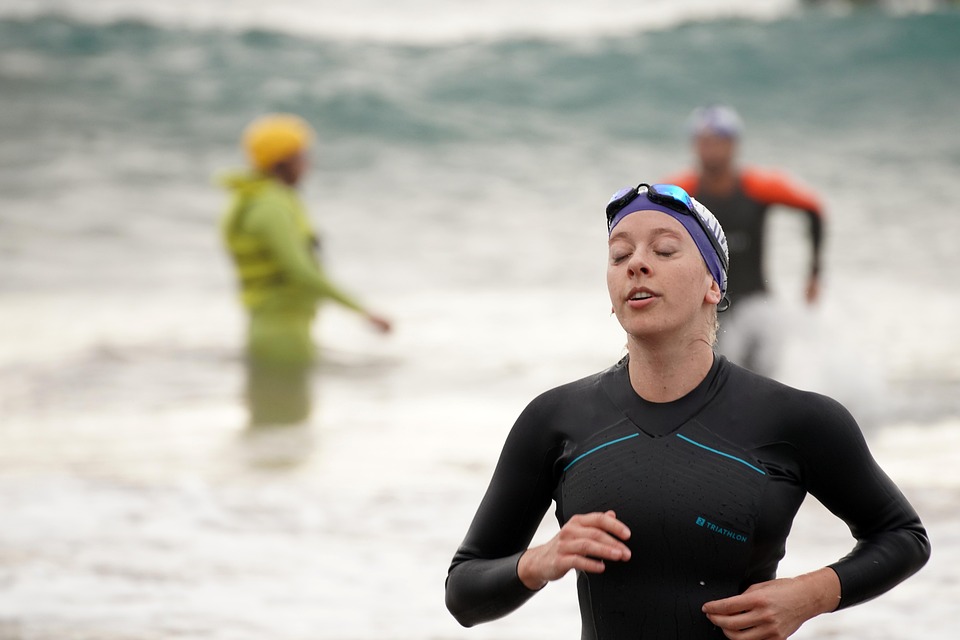From Couch to Tri: Transforming Your Fitness Journey
Introduction
Embarking on a fitness journey can feel daunting, especially when transitioning from a sedentary lifestyle to embracing a triathlon. The goal of this article is to guide you through the stages of transformation, providing insights into training, nutrition, mental preparedness, and more.
Chapter 1: The Mindset Shift
The first step in your transformation is a shift in mindset. Moving from a couch potato to a triathlete isn’t just about physical changes; it’s about reshaping how you view fitness and challenges.
Understanding Your "Why"
Before lacing up your shoes, it’s crucial to understand why you want to undertake this challenge. Is it for health, personal achievements, or a community? Clarity in your goals will keep motivation high.
Setting Realistic Goals
Start with SMART goals (Specific, Measurable, Achievable, Relevant, Time-bound). Instead of “I want to be fit,” set a goal like “I will complete a sprint triathlon in six months.”
The Power of Positivity
Cultivating a positive mindset is vital. Surround yourself with supportive individuals, join local groups, or connect with friends who share your goals.
Embracing Challenges
Expect bumps in the road. Embrace setbacks as opportunities to learn rather than roadblocks. This perspective will strengthen your resilience.
Chapter 2: Building a Solid Foundation
Before tackling swim, bike, and run, it’s essential to build a solid foundation to support your journey.
Assessing Your Current Fitness Level
Start by assessing your current fitness status. This can be done through simple evaluations like completing a mile run, swimming a lap, or biking for 20 minutes.
Incorporating Basic Exercise
Focus on incorporating basic exercises into your routine such as walking, jogging, cycling, and basic strength training. This holistic approach prepares your body for more intense training.
Cross-Training Benefits
Incorporating various activities helps prevent injury and keeps your routine exciting. Include exercises like yoga, Pilates, or even recreational sports.
Chapter 3: The Triathlon Components
Understanding the three main components of a triathlon is key in strategizing your training effectively.
Swimming
Start with basic techniques. Consider enrolling in a swim class to refine your skills and build confidence in the water.
Biking
Find a bike suitable for your needs, whether it’s a road bike, hybrid, or even a mountain bike. Start with short-distance rides before increasing your mileage.
Running
Running is often the most accessible sport for newcomers. Begin with brisk walks, then graduate to short jogs, tackling distance incrementally.
Chapter 4: Crafting Your Training Plan
A structured training plan tailored to your schedule and fitness level is essential.
Weekly Training Structure
Dedicate specific days to swimming, biking, and running, ensuring rest days are included. A general plan might consist of two of each sport, with one day focusing on brick workouts.
Listening to Your Body
Pay attention to your body’s signals. If you’re fatigued or in pain, don’t hesitate to modify your plan. Allow for additional recovery time when necessary.
Scheduling Long Workouts
Long workouts are essential for endurance. Plan these on weekends, perhaps starting with 30-minutes to an hour and gradually increasing.
Chapter 5: Nutrition and Hydration
Proper nutrition plays a significant role in your training and performance.
Understanding Macronutrients
Familiarize yourself with carbohydrates, proteins, and fats. Each plays a critical role in fueling your body during training.
Pre- and Post-Workout Meals
Eating right before and after workouts ensures optimal energy supply and recovery.
Hydration Strategies
During training, proper hydration is vital. Learn to carry water or electrolyte solutions, particularly during long sessions.
Chapter 6: Race Day Preparation
Race day can be both thrilling and nerve-wracking. Preparation is paramount.
Preparing Your Gear
Two to three days prior, lay out your race-day gear. This includes your swimsuit, biking shoes, helmet, running shoes, and nutrition supplies.
Mental Readiness
Visualize your race. Imagining the course and your performance instills confidence and alleviates anxiety.
Practicing Transitions
Transitional phases between swimming, biking, and running can be daunting. Practice these transitions in training to streamline your process on race day.
Chapter 7: Embracing the Community
Triathlons are not solely individual accomplishments; they are deeply embedded in community spirit.
Finding Local Clubs
Join a triathlon club or running group. The camaraderie and shared experiences can be motivating.
Social Media and Online Communities
Leverage platforms like Facebook or Instagram to connect with fellow triathletes. Sharing your journey fosters a sense of belonging.
Volunteering
Participate in local races, whether as a volunteer or a competitor. This not only builds community but enhances your experience.
Chapter 8: Overcoming Challenges
Every journey will have its share of challenges. Know how to face them head-on.
Dealing with Injuries
Injuries are common. Focus on recovery and don’t rush back into training. Seeking professional advice from physiotherapists can often expedite the process.
Balancing Life and Training
Finding the balance between work, family, and training can be tricky. Time management becomes essential. Create a realistic schedule that considers all aspects of your life.
Maintaining Motivation
Long-term motivation can wane. Diversify your activities, set new personal bests, and indulge in various workouts to keep it exciting.
Conclusion: Celebrating Your Journey
By completing your first triathlon, you’ve achieved a significant milestone. Take time to celebrate this accomplishment and reflect on the transformation from a sedentary lifestyle to an active, vibrant one.
Next Steps Post-Triathlon
Consider setting new goals, whether it’s trying a longer distance, setting personal records, or participating in various events.
Lifelong Commitment
Fitness is a lifelong journey, not a destination. Continue learning, pushing boundaries, and embracing new challenges that come your way.
This framework serves as an extensive guide for transforming from a sedentary lifestyle into a triathlete. If you’re ready to take on this challenge, remember: every journey begins with a single step!
References
- [Basetti, D. (2021). The Psychology of Endurance Athletics. Journal of Sports Psychology, 12(3), 203-220.]
- [Jones, T. R., & Smith, A. (2020). The Complete Guide to Triathlon Training. Fitness Press.]
- [Moore, C. E. (2019). Nutrition for Endurance: Fueling the Triathlete. Nutrition Journal, 18(2), 98-107.]


























Add Comment